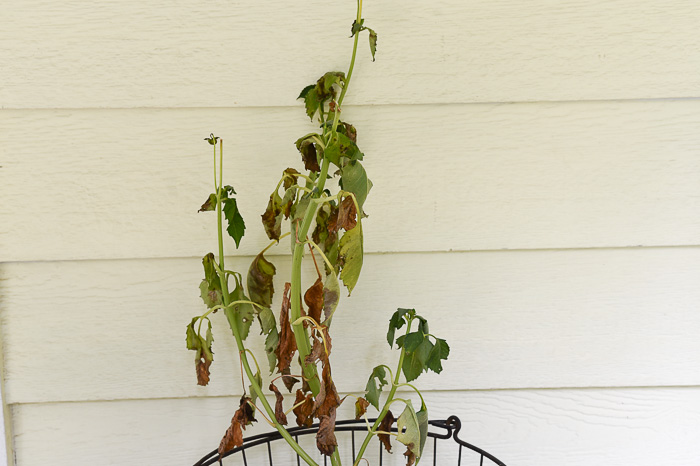Explore Why Some Plants Reject Epsom Salt as a Nutrient Resource
In the complex globe of plant nourishment, the rejection of Epsom salt as a viable nutrient resource by some plants postures an intriguing problem. The reasons behind this selective actions dive right into a complex interplay of plant absorption mechanisms, the one-of-a-kind chemical structure of Epsom salt, and plant-specific nutrient choices.
Plant Absorption Devices
In delving right into the detailed world of plant absorption devices, it becomes evident that the procedure is controlled by an advanced interplay of molecular pathways and physical dynamics. Plants absorb nutrients mainly through their roots, utilizing different transport systems to uptake vital elements such as nitrogen, phosphorus, magnesium, and potassium. Magnesium, an essential component in chlorophyll synthesis and enzyme activation, plays an important role in plant development and growth.
The absorption of magnesium includes numerous actions, beginning with its accessibility in the soil option. When dissolved, magnesium ions are taken up by plant origins through particular transport healthy proteins installed in the cell membrane layers. These proteins help with the movement of magnesium across the origin cell wall surfaces and into the plant's vascular system, where it is after that distributed to various cells to sustain different physical features.
Recognizing the intricate devices behind magnesium absorption in plants drops light on just how this necessary nutrient contributes to total plant health and wellness and efficiency. By optimizing magnesium uptake paths, farmers can enhance plant yields and quality, emphasizing the significance of understanding plant absorption characteristics for sustainable agriculture methods.
Epsom Salt Chemical Structure
The chemical framework of Epsom salt, additionally understood as magnesium sulfate heptahydrate, exposes a distinctive setup of components that contribute to its unique residential properties and applications. The seven water particles are freely adhered to the magnesium sulfate substance, enabling it to liquify easily in water and be conveniently taken up by plants through their origins.
The crystal framework of Epsom salt creates monoclinic prisms, which are lengthened crystals with parallel ends. This crystal shape affects the physical residential properties of Epsom salt, such as its structure and solubility. Comprehending the chemical structure of Epsom salt is important for comprehending its behavior as a nutrient source and its communications with plants in farming and horticultural techniques.
Plant-Specific Nutrient Preferences
Plants display distinct choices for details nutrients, stressing the relevance of recognizing their individual requirements for ideal growth and growth. Comprehending these plant-specific nutrient preferences is essential for taking full advantage of plant yields, enhancing ornamental plant development, and advertising total plant health.

Plant-specific you could look here nutrient preferences can additionally vary based on whether the plant is a monocot or dicot. By tailoring nutrient supplementation to satisfy the exact demands of each plant species, growers can maximize plant growth, minimize nutrient waste, and support lasting farming techniques.

Soil Ph and Nutrient Uptake
Soil pH plays a crucial role in identifying the accessibility of important nutrients for plant uptake. Acidic dirts with a lower pH are positive for plants like blueberries and azaleas, while alkaline dirts with a higher pH match plants such as lilacs and clematis.
Dirt pH affects the chemical forms of nutrients in the dirt. In acidic dirts, nutrients like iron, manganese, and aluminum can end up being much more offered, yet extreme level of acidity can result in poisoning concerns. On the various other hand, alkaline dirts might restrict the availability of nutrients like iron, copper, and zinc, affecting plant growth. Preserving moved here the ideal pH level in the dirt is necessary for ensuring that plants can effectively uptake the necessary nutrients for their healthy advancement and performance.
Hereditary Consider Nutrient Uptake
In the world of plant nutrition, the interplay of genetic variables substantially influences the uptake of essential nutrients essential for plant development and development. Genetic aspects play an essential function in shaping a plant's capacity to take in and use nutrients successfully. Variations in genetics can affect the expression of transportation proteins responsible for moving nutrients throughout cell membrane layers. These transportation proteins, such as channels and service providers, are encoded by certain genes that can vary among plant varieties or also within the very same varieties.
Moreover, hereditary variables likewise establish the performance of nutrient uptake systems within plants. For circumstances, some plants may possess genetic qualities that improve their ability to scavenge nutrients from the soil effectively, providing a competitive benefit in nutrient-poor settings. On the other hand, genetic variations can additionally bring about constraints in nutrient uptake, making sure plants more susceptible to deficiencies also when nutrients are bountiful in the soil.
Understanding exactly how hereditary variables influence nutrient uptake is important for creating techniques to maximize plant nutrition and improve crop performance in numerous agricultural setups. By unraveling the genetic devices entailed in nutrient uptake, researchers can function in the direction of establishing genetically enhanced plant ranges with enhanced vitamins and mineral purchase capabilities.
Verdict

In the detailed globe of plant nutrition, the denial of Epsom salt as a viable nutrient resource by some plants poses a fascinating quandary. what plants don't like epsom salt. Recognizing these plant-specific nutrient preferences is critical for making the most of crop returns, boosting decorative plant development, and promoting overall plant wellness
By tailoring nutrient supplements to satisfy the precise requirements of each plant species, growers can optimize plant development, lessen nutrition waste, and assistance lasting farming practices.
In the world of plant nourishment, the interaction of hereditary elements considerably affects the uptake of crucial nutrients vital for plant growth and advancement. Comprehending these intricacies in plant nutrient uptake is critical for optimizing plant growth and health and wellness in agricultural practices.
Comments on “What Plants Don't Like Epsom Salt and Exactly How It Affects Growth”